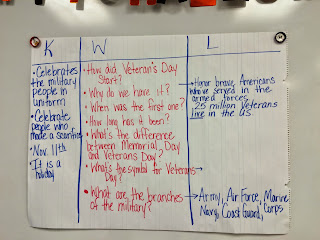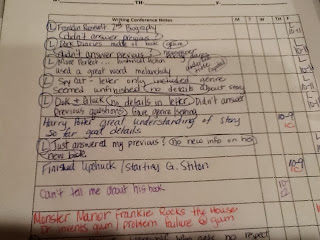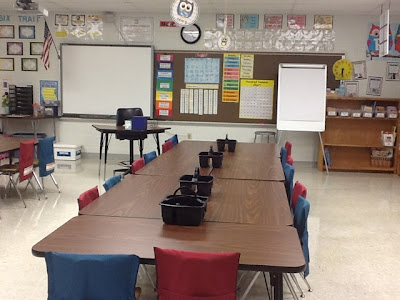If you haven't read
Wonder by R.J. Palacio then you are missing out on probably the most transformative book I've ever read. The impact of reading this book myself and reading it to my students has challenged my thinking about the way I create a classroom community. It has provoked me to imagine a world where all people are appreciated as individuals. A world where students think about the effects of their actions ahead of time and grow up to be adults that do the same. A world where people behave "Kinder Than is Necessary". Mighty utopian you might say. Too much
Hunger Games, and
Divergent reading for you.... However, after reading this book to my third graders I am inspired to believe that we can begin a ripple of change that has the ability to catalyze into a real movement. I believe this, because the alternative is to stay the course which isn't bad, I have a positive classroom climate with students who are compliant and even kind most of the time. However, this isn't the revolutionary change that this book has inspired in me.
So what is the life-changing book about you might say? This is a poignant story of a 5th grade boy named August who attends public school for the first time in his life. August was born with a multitude of facial abnormalities. His multiple surgeries, high maintenance health care needs, and a weakened immune system made it challenging for August to attend school. However, his parents feel that it is important for him to face the world outside of his home. Although August is scared his deepest desire is to be treated normally. Cleverly the author never gives us a clear picture of what August looks like. At one point in August's narration he explains that he won't bother to describe what he looks like, because whatever you are thinking it is probably worse. Palacio drops bread crumbs along the way to help you create your own image of what August looks like. The story continues and follows August's journey through school. The stares, the gasps, the teasing, the unlikely friendships, and the betrayal.
What sets this book apart is that it is told from multiple main characters points of view. The story begins with August's narration, then as each character begins their narration the book resets itself and retells the same key events from an alternative point of view. Beautifully and honestly told, my third graders hung on every word. They championed August and were ready to go to war for him when he was slighted. I can sincerely say I've never had a classroom reaction to a read aloud as I did to Wonder.
At one point in the story, after August has suffered a particularly painful experience, he asks his mother if he will always have to worry about these same jerks. I paused the story for one of those "teachable moments" and asked my class would he? They promptly responded with a exuberant "Yes!" I pushed forward and asked, should he? They chimed in with "No." That led me to think what could we do to keep the Augusts (and everyone else in the world) from experiencing the "jerks". I asked them. They mentioned; stand up for him, be his friend and many similar answers. I wanted more. I wanted them to see that standing up for him was after the fact! So I asked: Could we make sure that we aren't the "jerks" that August or others have to face. The light bulbs went on and I choked back a few tears as I saw them make connections to the way they had been treated or the way they had treated others.
In the final chapters of the book, Palacio beautifully captures the theme of the book...Be kinder than is necessary for the situation. Really let that soak into your bones,
Kinder than is Necessary.
I know I am a kind person, but do most of us practice being kinder than is necessary for the situation. One character in the book chooses to eat lunch with August on the first day of his new school. She wasn't asked to do it ahead of time, she just saw the situation and acted out of kindness. This one event changed August entire journey. This made me think, could we teach kids to evaluate and reflect on situations using this meter stick?

So from the reflections of this book a new classroom climate is born. Next year at the start of the year I plan to create a classroom motto based on the theme of "Kinder than is Necessary". It is my hope that every decision we make inside and outside of the classroom can be judged against this benchmark. Obviously this will be helpful with dealing with classroom conflict and disruptions, but I hope that it inspires us to think about ways to actively be kind. Again I know this all sounds utopian, but if we can train students to self evaluate their words, thoughts, and actions there will be a lot fewer "jerks" out there to worry about.
For more resources on this amazing book.
#choosekind - Wonder the Movement
I would love to hear your thoughts, feel free to comment below. #choosekind











.jpg)












